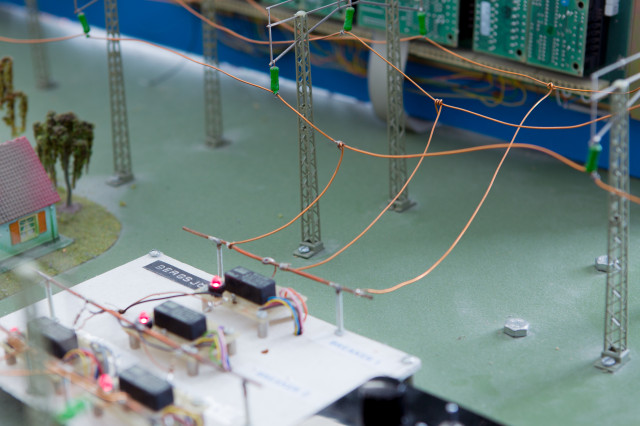The course focuses on wireless networks for internet of things (IoT). Introduction to applications of wireless IoT. Methods for wireless communications protocols with an emphasis on analytical performance analysis. Analysis of the interplay between wireless network protocols and applications based on theoretical methods.
EP270V Internet of Things 3.0 credits

IoT is "the world of everything connected" because it can connect physical objects, persons, infrastructures, or even businesses. loT allows us to gather data, make data analysis, and
ultimately take some optimal decisions. We will use IoT in the digitalized world, where vehicles will drive without human drivers, or energy and water resources will be distributed much more efficiently than today. This course gives an overview of some of the important
IoT wireless communication aspects.
Information per course offering
Information for Autumn 2024 Start 26 Aug 2024 single courses students
- Course location
KTH Campus
- Duration
- 26 Aug 2024 - 27 Oct 2024
- Periods
- P1 (3.0 hp)
- Pace of study
25%
- Application code
10122
- Form of study
Distance Daytime
- Language of instruction
English
- Course memo
- Course memo is not published
- Number of places
5 - 100
- Target group
Non-programme students
- Planned modular schedule
- [object Object]
- Schedule
- Part of programme
- No information inserted
Please note that Students not located in Sweden may have problems attending a course at KTH.
You could meet obstacles if you're required to pay fees or if you do not have a Swedish Mobile BankID.
Contact
Course syllabus as PDF
Please note: all information from the Course syllabus is available on this page in an accessible format.
Course syllabus EP270V (Autumn 2024–)Content and learning outcomes
Course contents
Intended learning outcomes
After passing the course, the student should be able to:
- give an account of the central wireless network protocols for system design for internet of things (IoT)
- theoretically characterise performance for wireless communications protocols
in order to
- understand and explain which design options there are for a specific wireless communication system
- be able to give arguments for which type of performance should be prioritised for designing wireless IoT systems and machine-learning methods.
Literature and preparations
Specific prerequisites
- In total 180 higher education credits of which at least 90 higher education credits in electrical engineering, engineering physics or technical mathematics.
- Knowledge in one variable calculus, at least 6 higher education credits.
- Knowledge in computer communication, at least 6 higher education credits.
- Knowledge in probability theory, at least 3 higher education credits.
- Knowledge in signals and systems, at least 6 higher education credits, equivalent course EQ1110/EQ1120.
- Knowledge in English equivalent to English B/English 6.
Equipment
Literature
Examination and completion
If the course is discontinued, students may request to be examined during the following two academic years.
Grading scale
Examination
- INL1 - Hand-in assignment, 1.0 credits, grading scale: P, F
- PRO2 - Project assignment, 2.0 credits, grading scale: P, F
Based on recommendation from KTH’s coordinator for disabilities, the examiner will decide how to adapt an examination for students with documented disability.
The examiner may apply another examination format when re-examining individual students.
Opportunity to complete the requirements via supplementary examination
Opportunity to raise an approved grade via renewed examination
Examiner
Ethical approach
- All members of a group are responsible for the group's work.
- In any assessment, every student shall honestly disclose any help received and sources used.
- In an oral assessment, every student shall be able to present and answer questions about the entire assignment and solution.